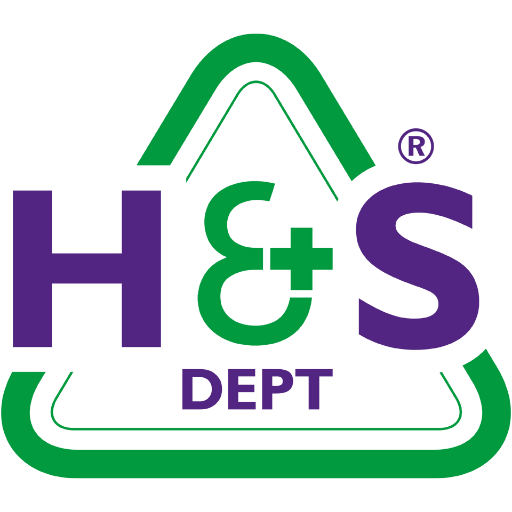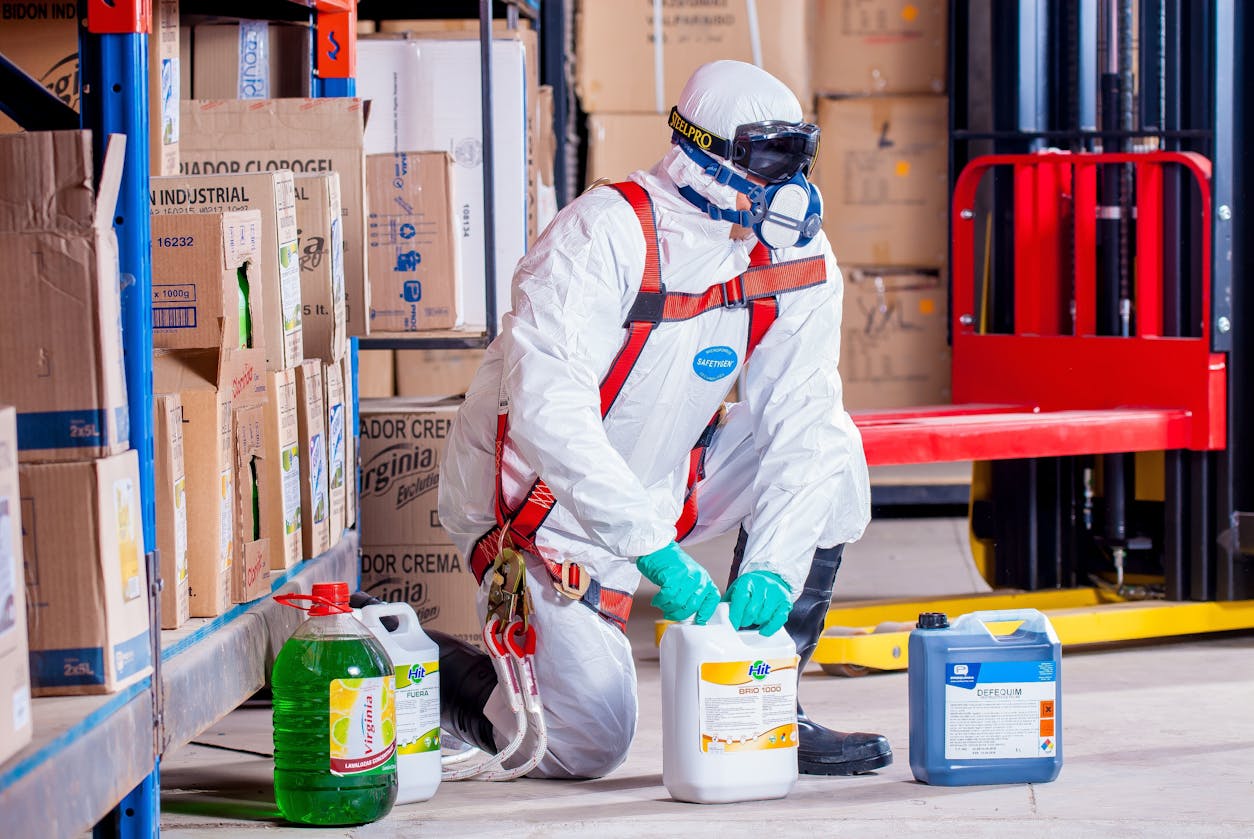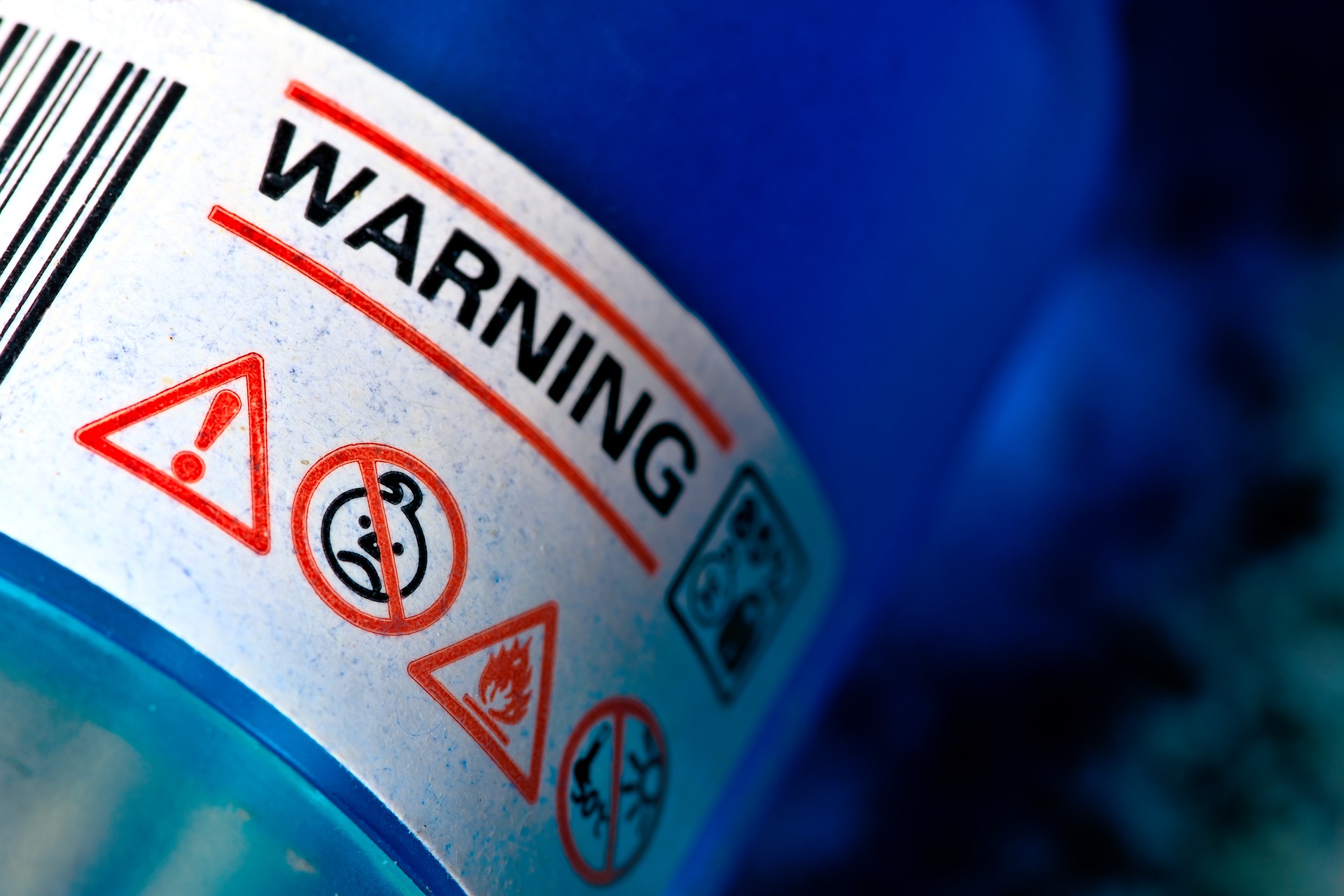For businesses operating in high-risk industries, hazardous substances are often an unavoidable part of daily operations. Whether it’s chemical exposure in manufacturing, dust inhalation in construction or cleaning agents in healthcare, dangerous substances can pose a serious threat to employee health if not managed correctly.
The Control of Substances Hazardous to Health (COSHH) Regulations exist to ensure that employers assess, control and minimise the risks posed by hazardous substances in the workplace. But compliance isn’t just about ticking a box; it’s about safeguarding your workforce and keeping your business running smoothly.
Despite its importance, many businesses struggle with COSHH compliance. Identifying hazardous substances, implementing control measures and ensuring workers receive the right training is no small task, especially when juggling other operational priorities. That’s where customised COSHH training makes all the difference. Tailored training ensures that employees are aware of the specific risks in their workplace and know exactly how to protect themselves—helping businesses not just comply with the law but genuinely reduce risk.
Why Is COSHH Training Essential?
Hazardous substances can cause serious long-term health issues, from respiratory conditions and skin diseases to occupational cancers and poisoning. The risks are real, and without proper training, employees may not recognise the dangers or know how to handle hazardous materials safely.
Legally, employers must provide COSHH training where there’s a risk of exposure to harmful substances. But the law isn’t just there for compliance; it exists because proper training saves lives and protects businesses from legal and financial consequences.
Understanding COSHH Compliance: What’s Involved?
Complying with COSHH regulations isn’t just about training; it’s about creating a safe system of work. The Health and Safety Executive (HSE) outlines seven key steps to COSHH compliance:
- Identify hazardous substances in the workplace.
- Assess the risks associated with these substances.
- Implement control measures to minimise exposure.
- Ensure proper handling, storage and disposal procedures are in place.
- Monitor exposure levels to ensure ongoing safety.
- Provide clear information and training to employees.
- Review and update procedures regularly, particularly when introducing new substances.
Of course, this isn’t a set-and-forget exercise; workplaces evolve, new substances are introduced and regulations change. That’s why ongoing training and review are crucial to keeping workplaces safe and compliant.
Why Customised COSHH Training Matters
While general COSHH training covers the basics, many businesses operate in specialist environments where one-size-fits-all training just isn’t enough. Customised training ensures that employees understand the specific risks they face every day, making it far more effective than generic courses.
A tailored COSHH training programme directly addresses the hazards present in a given workplace, ensuring employees:
- Understand which substances they’re exposed to and the risks involved.
- Know how to safely store, handle and dispose of hazardous materials.
- Are aware of the right personal protective equipment (PPE) and when to use it.
- Can respond effectively to spills, leaks, or accidental exposure.
When training is practical, relevant and specific, employees are far more likely to engage, retain information and apply what they’ve learned — significantly reducing the risk of accidents or long-term health issues.
The Role of Employers: Responsibilities & Best Practices
Employers carry the responsibility for ensuring their workforce is protected from hazardous substances. This means:
- Conducting regular risk assessments to identify potential hazards.
- Providing clear, accessible COSHH training that employees understand.
- Ensuring proper control measures (like ventilation, PPE, or substitution of hazardous substances) are in place.
- Encouraging employees to report safety concerns or incidents.
- Keeping COSHH documentation up to date and regularly reviewing safety procedures.
At the same time, employees have the right to be trained and informed about the risks they face. They should feel confident asking questions, reporting unsafe practices and following COSHH guidelines without fear of repercussions.
A strong safety culture starts from the top. When leadership prioritises COSHH compliance, employees are far more likely to take safety seriously, leading to fewer incidents and a healthier, more productive workplace.
We Can Help
Navigating COSHH compliance can feel overwhelming, especially when dealing with multiple hazardous substances and changing regulations. That’s where we come in.
Here at The Health & Safety Dept, we’re proud to offer customised COSHH training solutions designed around your specific workplace risks. Whether you operate in construction, manufacturing, healthcare or another high-hazard industry, our expert advisors will work with you to develop a practical, engaging and fully compliant training programme that protects your employees and your business.
When it comes to hazardous substances, awareness is everything. A lack of training can lead to serious health consequences, legal trouble and financial losses for businesses. But with the right approach to COSHH training, tailored to your specific risks, you can keep employees safe, ensure compliance and create a safer working environment for everyone.
If you’re unsure whether your current COSHH training is fit for purpose, or if you need help developing a custom training plan, The Health & Safety Dept is ready to assist. Reach out today and let’s build a safer workplace together.




